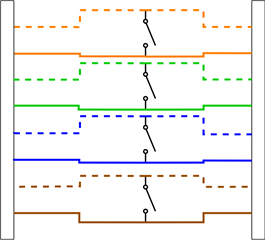Other Parts Discussed in Thread: DP83869
Hi everyone,
I'm currently working on updating the DP83867 driver to incorporate TDR (Time-Domain Reflectometry) support. However, I've encountered some issues while attempting to detect short/open circuits.
For this update, I've used the following documents:
Here are the hardware details I'm working with:
- Congatec Conga-SA7 SOM
- Congatec Conga-Seval Carrierboard
When I connect an Ethernet cable from my carrier board to my laptop, all cable pairs return as OK. However, upon disconnecting the cable from my laptop and rerunning the test, I'm getting short circuit readings across all pairs. I anticipated open circuit readings since the cable isn't connected. Additionally, I've created a custom cable with switches to toggle short circuits. Interestingly, when I use this cable without enabling a short circuit, I observe the same behavior as with a standard Ethernet cable. Even when I do enable a short circuit while the cable is connected, all pairs continue to report as OK, despite the presence of a short circuit on one pair. When i disconnect the cable from my laptop and enable the short, all pairs return short between pair except the one that has the short enabled this returns OK.
I've already conducted checks by printing all register values and manually analyzing the algorithm. Surprisingly, the output from this analysis aligns with the results returned by the driver. Thus, it appears that either the register data isn't accurate or I'm misinterpreting it.
Does anyone have any insights or ideas on what might be causing these issues?
Kind regards,
Mart



